With the rebirth of Denver’s new Theater District there has been a lot of recent dialog about the district - both pro and con. Often referenced is Curtis Street which was once known as Denver’s ‘Theater Row’. I managed to pull together some old photos and commentary that will further describe this piece of Denver history as many folks, even many Denver residents, are completely unfamiliar with it. Apollo Hall was Denver’s very first theater and it opened its doors on Curtis Street in 1859 and clearly started a trend. Following the 1881 opening of the Tabor Grand, numerous other theaters sprang up along Curtis Street. The dazzlingly illuminated theatres inspired Mayor Robert Speer’s promotional publication Denver Municipal Facts to tout Curtis Street between Fifteenth and Nineteenth streets as “Denver’s Great White Way.”
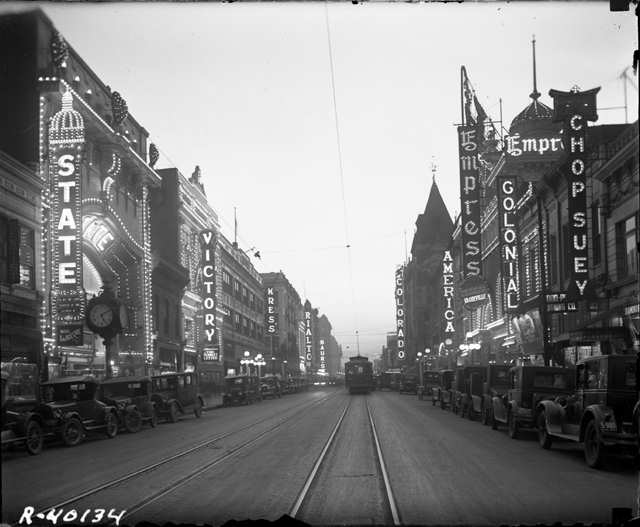 1927
1927 - Denver Public Library, Western History Collection, Creator: Rhoads, Harry Mellon
I spent a little time at the Denver Public Library researching this topic and found the Denver Municipal Facts to be a fascinating resource - a literal peak into the past. Anyone interested in this sort of history should definitely take a look for themselves. Here is a little piece I found in the February 28, 1914 issue of DMF under the title ‘Denver Ranks Among the First as a Theater Center’ -
‘Denver ranks foremost, in theater going, of any city in comparison to size, of the country. With our population of 230,000 persons a daily average theater attendance of approximately 100,000 is maintained, including all classes and kinds of amusement.'
Denver at the time boasted a total of 66 theaters of various persuasions. The combined seating capacity of these 66 houses was about 60,000, with a total of over $5,000,000 invested as stated in the DMF booklet.
 1913
1913 - Denver Public Library, Western History Collection, Creator: McClure
 1921
1921 - Denver Public Library, Western History Collection
Curtis Street glowed at night as entertainment seekers poured out of streetcars and motorcars for a night on the town. The intersection of Sixteenth and Curtis became so congested that the City positioned a police officer in the center on a wooden platform to direct traffic.
 1919
1919 - Denver Public Library, Western History Collection
The ‘roaring twenties’ were indeed roaring in Denver. Forrest Johnson , an organist who played in Curtis Street theaters from 1915 to the 1940s, reminisced in his booklet, Denver’s Old Theater Row:
Downtown Denver in the 1920s, and for a while before, was more or less a wide open town. Almost every drug store had a slot machine, a punch-board and a “26” dice game at the cigar counter. Many of the hotels from Larimer to Welton Street were of a dubious reputation, and Ladies of the Evening were pretty much tolerated by the authorities. Professional pool hustlers, cold-deck artists and dice sharpies were plentiful, and prohibition being in effect bootlegging was big business - a quart of bath tub gin, with a genuine counterfeit label, bringing $16.00.
Every theater lobby was a dazzling place, jammed with waiting patrons. Marquees were ablaze with traveling electric words and signs. Blinking and intermittent spot and floodlights were on every business establishment and surplus World War 1 carbon arc anti-aircraft searchlights roamed the sky. In between the theaters were cotton-candy, cherry cider and root beer stands, self-photo booths, song-plugger offices, Chinese restaurants, freak side shows, pig-ear sandwich wagons, pool halls, pitch men and taxi-dance halls with their bleached and painted dime-a-dance girls.
 1918
1918 - Denver Public Library, Western History Collection
I've included a few photos of the more prominent theaters and a little information on each taken from Forrest Johnson's book 'Denver's Old Theater Row'.
The Princess Theater -
The Princess opened in 1909 and was renamed the Victory in 1919 in honor of WW1. It was a larger theater with seating for 1140. The Victory met its demise in 1951.
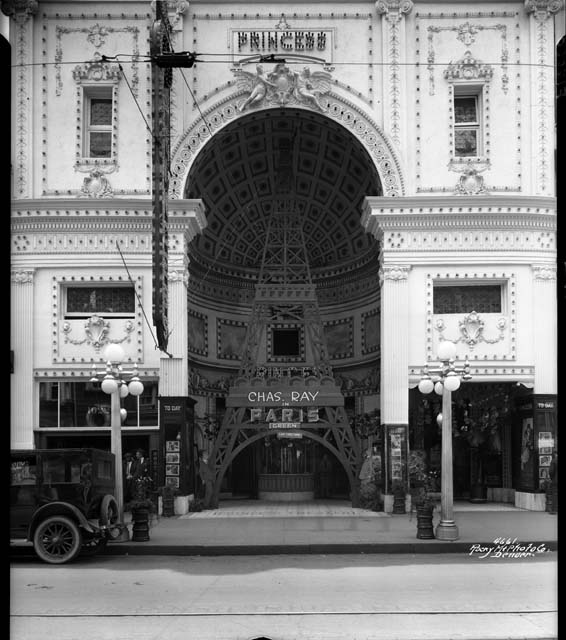 1920
1920 - Denver Public Library, Western History Collection, Creator: Rocky Mountain Photo
 1922
1922 Denver Public Library, Western History Collection
 1922
1922 - Denver Public Library, Western History Collection, Creator: Smyth
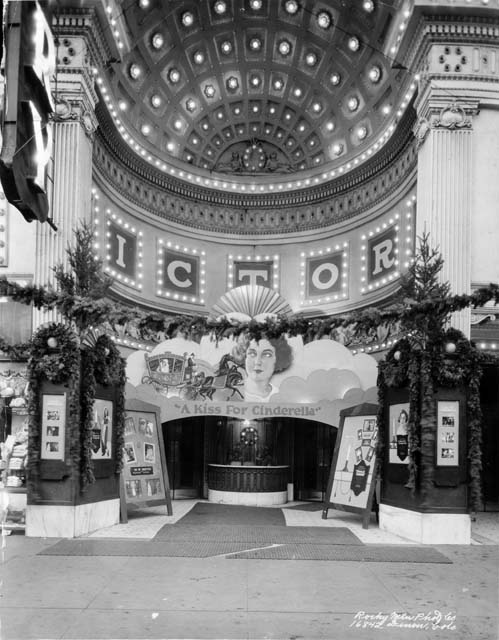 1926
1926 - Denver Public Library, Western History Collection
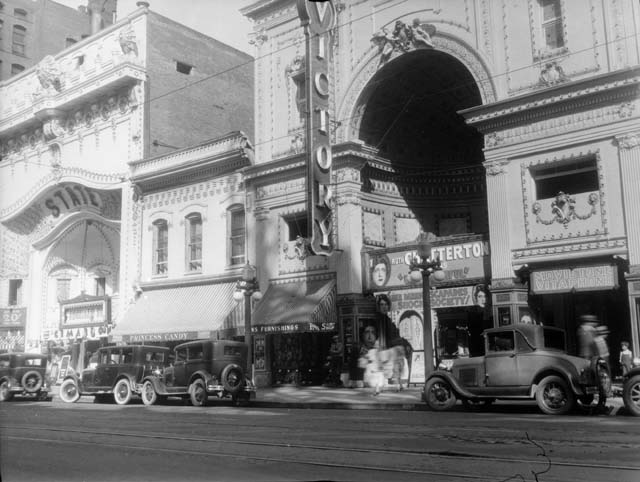 1931
1931 Denver Public Library, Western History Collection
The Empress Theater -
Opened in 1907 as the Majestic, the Empress was a meduim sized theater seating 1400. The Empress would host many young actors headed for stardom including Laurel and Hardy, George Burns and Gracie Allen, Eva Tanguay, Walter Winchell, and Charlie Chaplin who acted there in the sketch “ A Night in a London Music Hall”. In the 1930s the Empress featured Joe Marion’s Tab show, starring Joe Yule, Mickey Rooney’s father, as head comic. The Empress, later known as the Pantages, Center, and New Victory was torn down in 1969 due to Urban Renewal.
 1920
1920 - Denver Public Library, Western History Collection, Creator: Smyth
 1910
1910 - Denver Public Library, Western History Collection
The Tabor Grand Opera House -
Built by Horace W. Tabor, multi-millionaire gold and silver mining king, the Tabor opened in September 1881 with a two-week festival of operatic performances by soprano Emma Abbott and her Grand English Opera Company. To bring such talent to Denver, Tabor guaranteed Abbott $20,000 plus $3,000 for railroad fare. The Tabor cost $750,000 which was a considerable sum for the day. Tabor commissioned architect Willoughby Edbrooke to tour the great opera houses of the day to collect ideas and Edbrooke was inspired by theaters in London and Paris. The Tabor was luxurious with Belgium carpets, French tapestries, Japanese cherry wood, Honduras mahogany, and marble floors. Considered large for the day, it seated 1550. From the 1880s through the 1920s the world’s greatest actors and most famous productions trod the stage of the Tabor Grand. The theater was torn down in 1964.
 1930
1930 - Denver Public Library, Western History Collection, Creator Denver National Co.
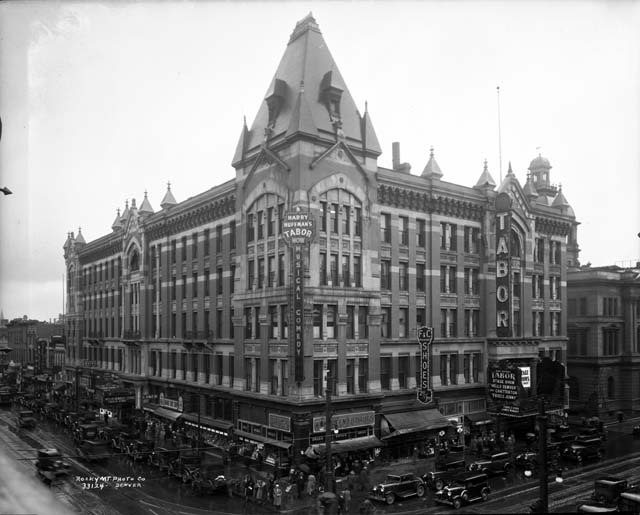 1933
1933 - Denver Public Library, Western History Collection, Creator: Rocky Mountain Photo
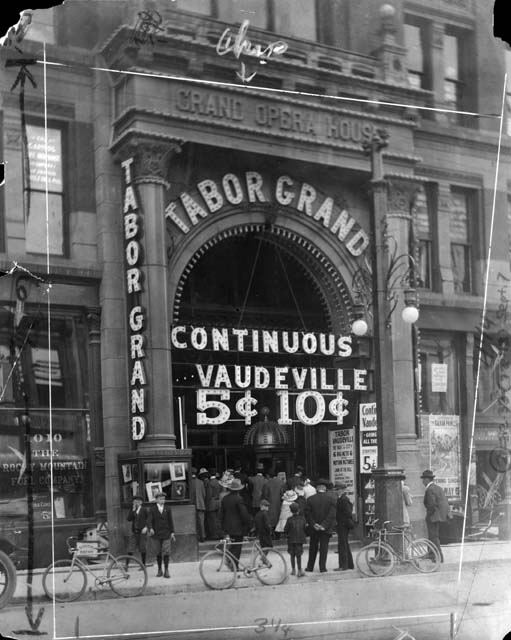 1920
1920 - Denver Public Library, Western History Collection
The Strand Theater -
The Strand Theater at 1630 Curtis was built by the Brown and Megahan Amusement Company in 1914 on the site of the old Isis. In the silent-picture days many of the western stars made personal appearances with their pictures to encourage business. Stars such as Tom Mix, William S. Hart, Jack Hoxie, Denver’s Pete Morrison etc., would put on a good act with their lariats, silver-mounted saddles, and rubber-shod “high school” horses. The Strand was a medium sized theater seating 1129.
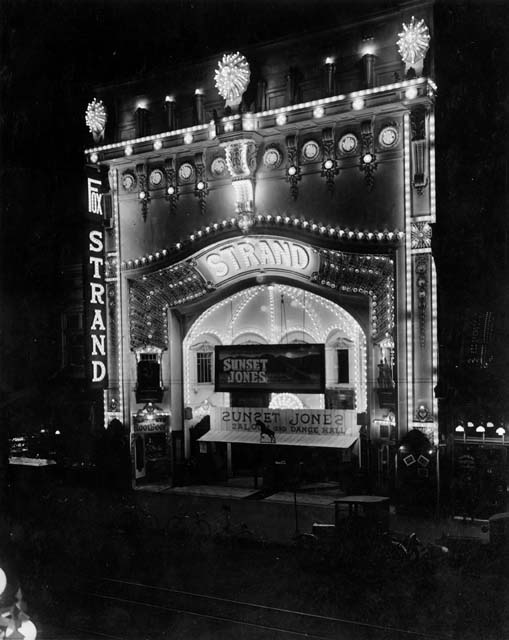 1921
1921 - Denver Public Library, Western History Collection, Creator Smyth, Charles M.
 1921
1921 - Denver Public Library, Western History Collection, Creator Smyth, Charles M.
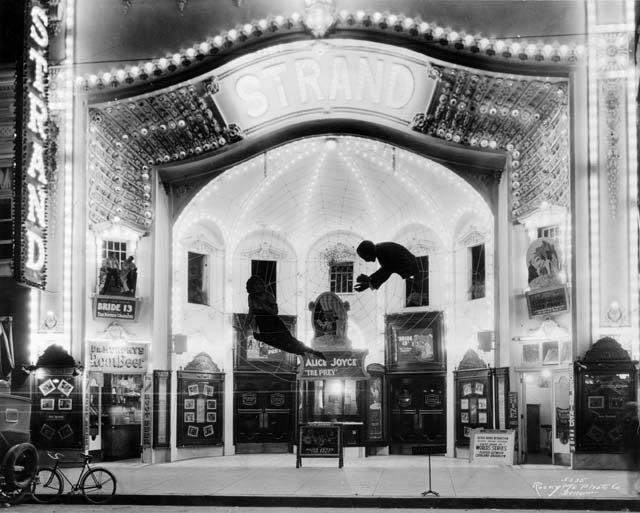 1921
1921 - Denver Public Library, Western History Collection, Creator: Rocky Mountain Photo
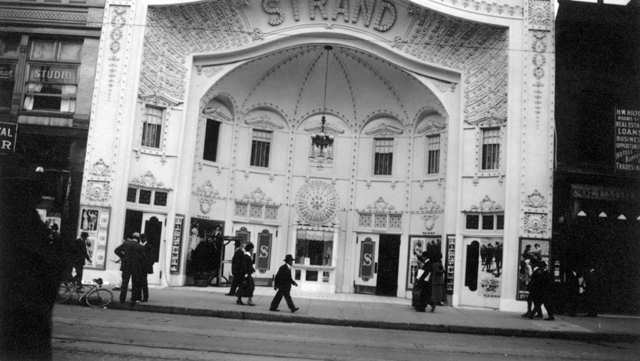 1920
1920 - Denver Public Library, Western History Collection
The Orpheum Theater -
Originally on Curtis, the Orpheum relocated to Fifteenth and Welton Streets in 1903 as Denver’s largest and most refined vaudeville house, a $200,000 palace seating 1,600. It was torn down and in 1932 a new building costing $400,000 and seating 2,000 opened on the same spot. Among the many to perform here were the four Marx Brothers, Will Rogers, Sophie Tucker, Sarah Bernhardt, and Gus Edward’s School Days, with such child stars as George Jessel, Al Jolson and Georgie Price. The Orpheum was demolished in 1967.
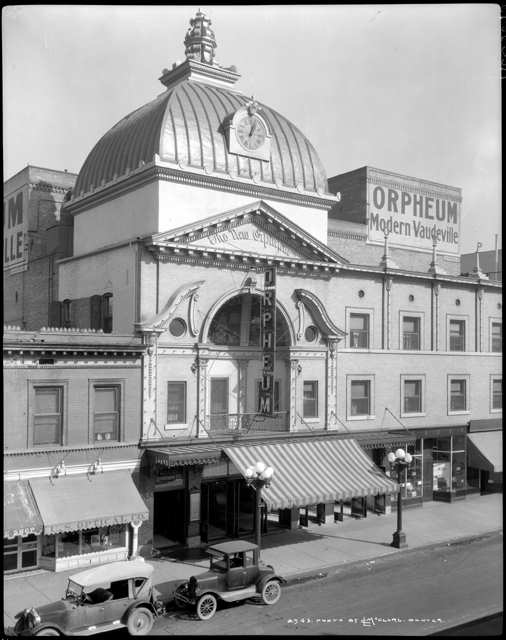
Denver Public Library, Western History Collection
The State Theater -
The State Theater opened in 1925 with a carnival like celebration. A new 1925 model, two manual Wicks orchestral theater organ was installed on a new-type rising platform, the first one in Denver. The State offered such traveling spactaculars as D.W. Griffiths’s film, “The Birth of a Nation’ - complete with its own orchestra. The State was torn down in 1948-49.
 1932
1932 - Denver Public Library, Western History Collection
The Paris Theater -
The Paris theater was built in 1913 at 1751 Curtis by F.C. Brown, a wealthy steel magnate. It was a large modern theater with 2100 seats. An outside entrance just north of the ticket office led downstairs to a cabaret restaurant-bar. Early on the Paris was run by Frank Milton who had been a ‘smash’ vaudeville headliner for some twenty years. In 1911, following the coronation of King George V of England, Frank Milton and the De Long Sisters, as representatives of the United States, were one of the International acts appearing at a Command Performance for the Royal Reception. Later known as the Rivoli Theater.
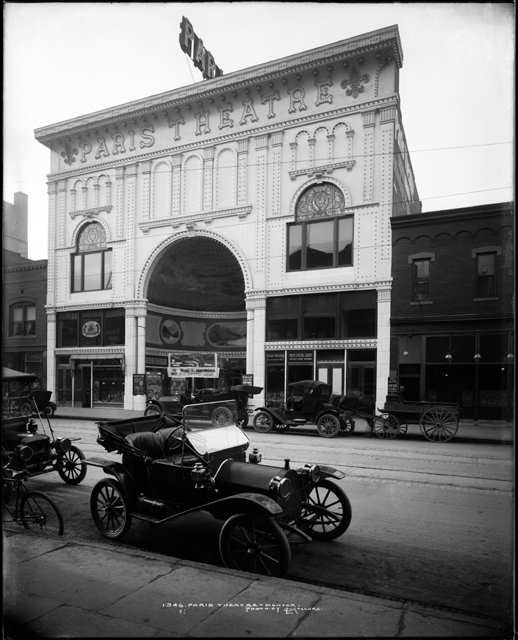 1915
1915 - Denver Public Library, Western History Collection, Creator: McClure, Louis Charl
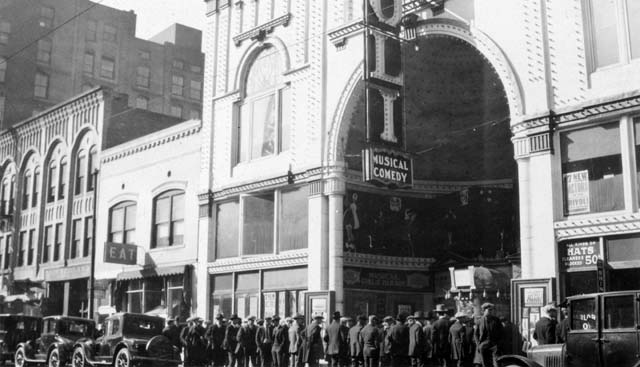 1920
1920 - Denver Public Library, Western History Collection
The Isis Theater -
Built in 1913 the New Isis was located at 1722 Curtis. It was a large luxurious theater that seated 1800. The owner of the Isis, Sam Baxter paid $50,000 for a four manual orchestral theater organ, the first that Wurlitzer had ever built. The Isis became a parking lot in 1954.
 1935
1935 - Denver Public Library, Western History Collection
 1922
1922 - Denver Public Library, Western History Collection
The Iris Theater -
The Wonderland Theater was one of Denver’s oldest built in the 1880s. It was at various times also called the Curtis, Bijou, Orpheum, New Peoples, Denver, Iris, Music Box, Gem, and Finally New Paris. The New Paris suffered the ignominy of being the final Curtis Street theater to fall to the wrecking ball in 1974.
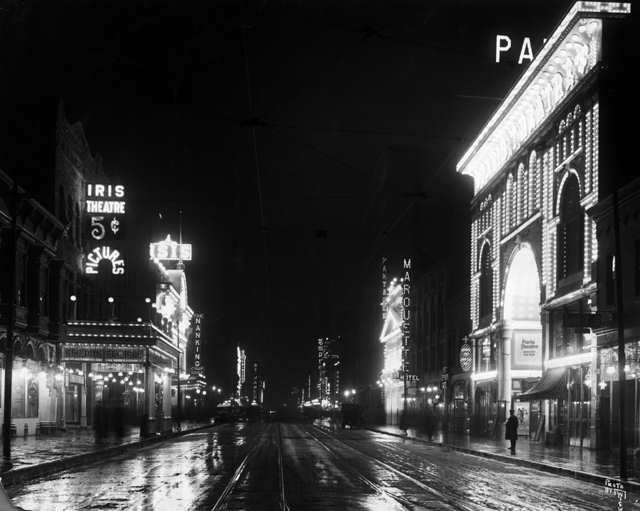 1910
1910 - Denver Public Library, Western History Collection, Creator: Wiswall Bros
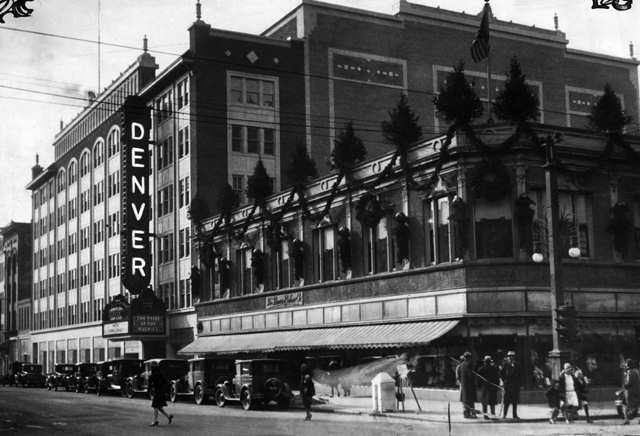
Denver Public Library, Western History Collection
The America Theater -
The America Theater was built by Bishop and Cass for the Universal Film Company during World War 1 and was demolished in 1932.
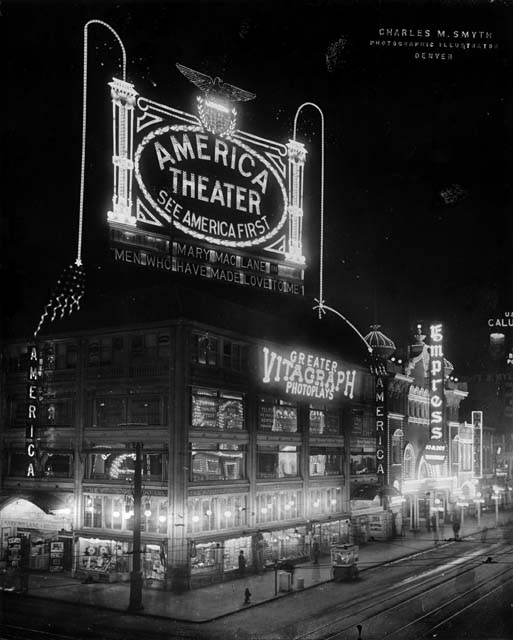 1918
1918 - Denver Public Library, Western History Collection, Creator: Smyth

Denver Public Library, Western History Collection
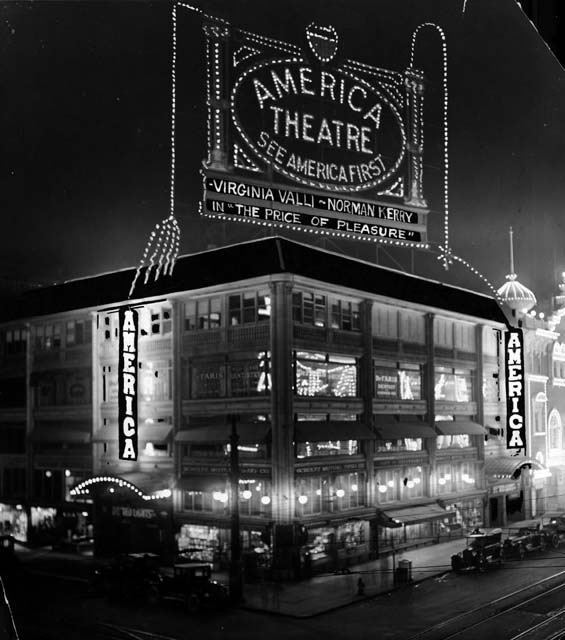 1925
1925 - Denver Public Library, Western History Collection
The Broadway Theater -
The Broadway theater opened in 1891 and its final curtain was around 1955. The Broadway was a large theater with 2000 seats. In the early 1900s the Broadway offered the great stage spectacular “Ben Hur”. It consisted of a whole train-load of scenery, horses, harness, swords, helmets and chariots. It took two cars to carry the enormous treadmill, on which two teams of white plumed horses ran pulling the gilded chariots, with traveling scenery in the background. The Broadway was contained inside the Hotel Metropole which was subsequently imploded in 1984 along with the Cosmopolitan Hotel. Although the Broadway wasn't a part of the Curtis theaters I've included it due to its significance.
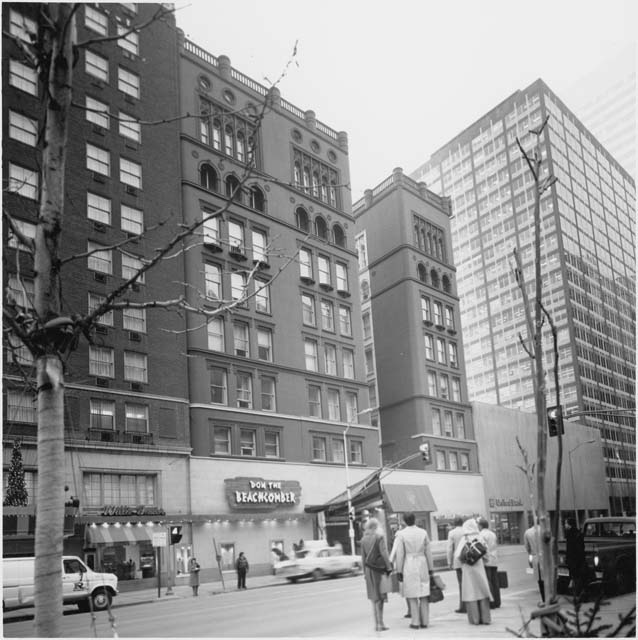 1982
1982 - Denver Public Library, Western History Collection
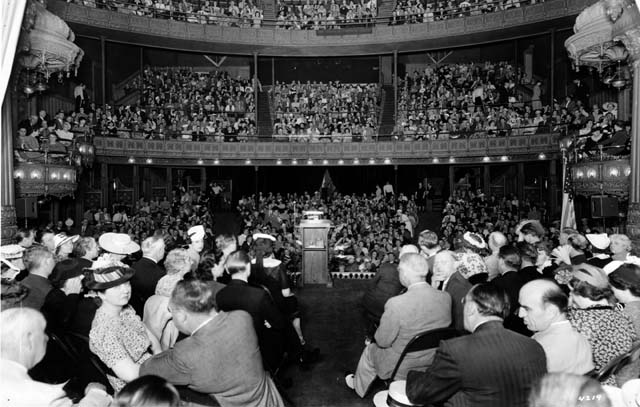 1940
1940 - Denver Public Library, Western History Collection
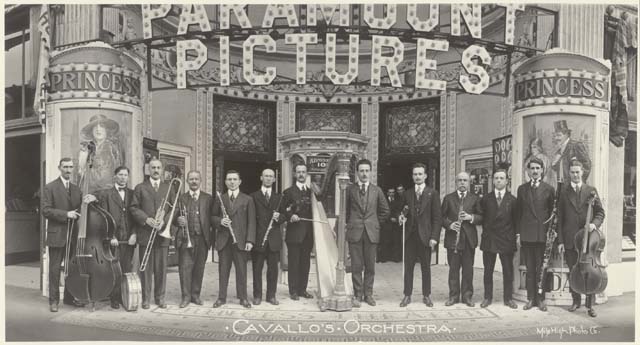 1915
1915 - Denver Public Library, Western History Collection
 1927
1927 - Denver Public Library, Western History Collection
The Center Theater -
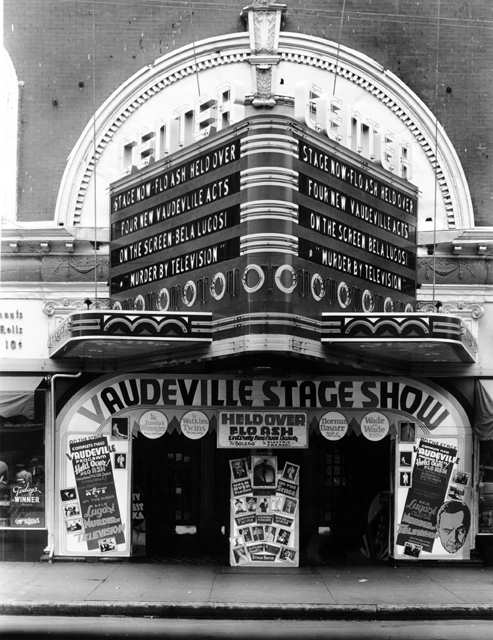
Center Theater 1910-1940 - Denver Public Library, Western History Collection
What I find remarkable about Denver’s old Curtis Street is that not a single theater survived to this day - none. The only familiar building you’ll find in these photos is the Baur’s building which recently restored its blade sign and is once again offering fine dining.
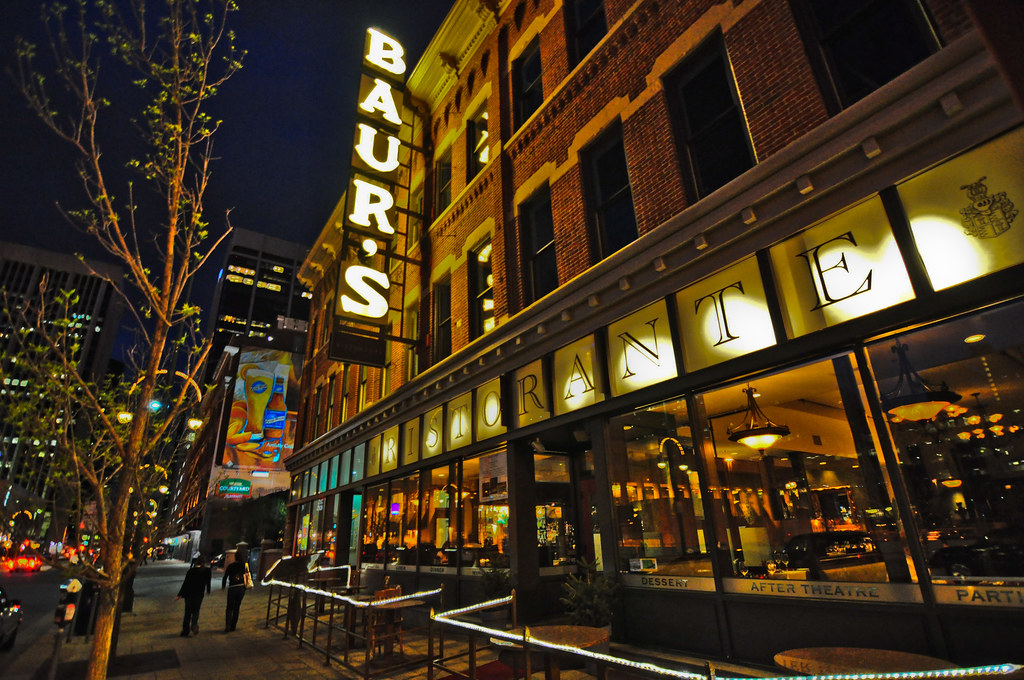
 1943
1943 - Denver Public Library, Western History Collection
All the once-brilliantly lit theaters were eventually leveled for parking lots and office buildings. The unforgettable street of theatrical fantasy had vanished. Only old photos and aging memories linger of the America, Colonial, Colorado, Crystal, Denham, Empress, Gem, Iris, Isis, Majestic, New Paris, Novelty, Palace, Paris, Plaza, Princess, Rialto, Rivoli, Round-Up, State, Tabor Grand, Tivoli, Victory, and Wonderland theaters. Although the theaters and movie palaces that once lined Curtis Street are gone, the west end of the street would be reborn as the home of one of the country's greatest perfroming arts complexes - the Denver Center for the Performing Arts. The twelve acre, four square-block DCPA is the nation's largest under one roof, with eleven performance spaces and 11,260 seats. By any measure- acreage, seats, stages, attendance, or variety and quality of shows- it ranks in the top tier with the Los Angeles Music Center, the Kennedy Center in Washington D.C., and Lincoln Center in New York City.



